European Breeding Bird Atlas 2: an appeal for help
Guest blog from Mark Eaton
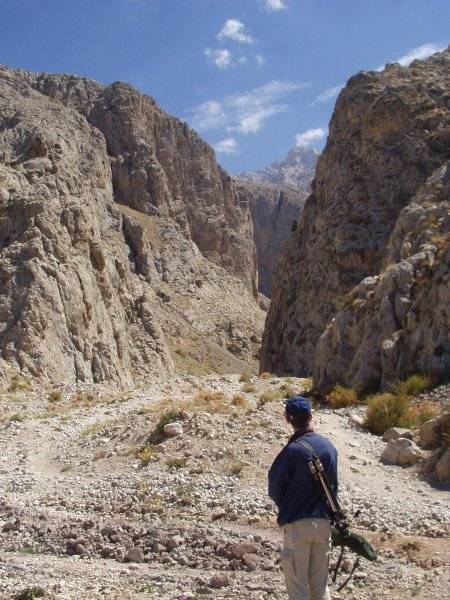
Good, appropriate conservation action relies upon knowledge. Knowledge of what species and habitats most need our help, knowledge of where these are, and knowledge of what needs to be done to help them and how best to deliver this help. In the UK, and some other western countries, we have a long-established culture of biological recording which is often at its strongest when it comes to birds. This has blossomed into formal recording schemes such as the BTO/JNCC/RSPB Breeding Bird Survey, and means that we have relatively robust knowledge with which to underpin our conservation activity. But elsewhere the picture is not so complete. One of the first steps towards better understanding is to map species’ distribution, and in many country bird atlases have heralded an era of improved monitoring.
The first Atlas of Breeding Birds in Europe was published in 1997 (Hagemeijer & Blair 1997), drawing on data collected in the 1980s. It was a mammoth but very valuable undertaking, proving to be a powerful tool for conservation ever since, serving as the authoritative dataset on European bird distribution, directing conservation action and enabling scientific research; to date, thousands of scientific papers have referenced the first atlas.
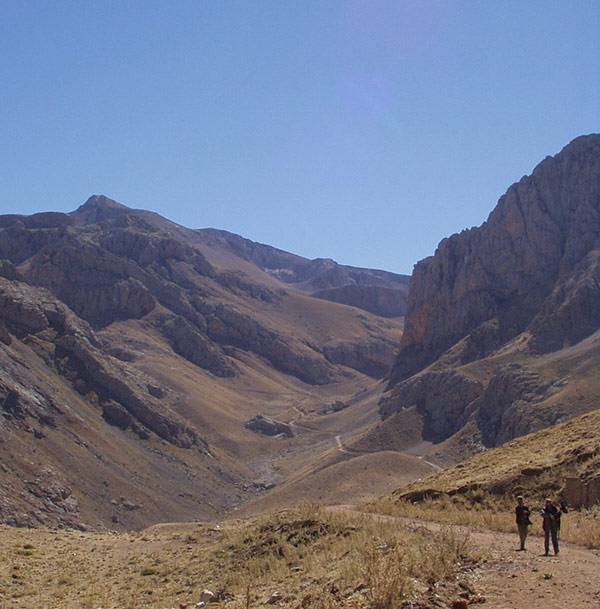
Aladag Mountains, Turkey.
But most of the data the first atlas drew upon is now 30 years old. In those 30 years, many environmental changes, notably land use and climate, have impacted on populations of birds across Europe. For effective conservation and informed decision-making, we need the most up-to-date information on these impacts: it is time for a new atlas. Therefore, in 2013, the European Birds Census Council launched the European Breeding Bird Atlas 2 (EBBA2). New capacity for recording birds, coupled with new technology, has improved our ability to collect data from even the most remote parts of the continent, and provide a robust baseline for future monitoring. EBBA2 will:
- provide up-to-date distribution maps for breeding birds across the whole of Europe
- map relative abundance across Europe for many species, for the first time
- show changes in species distribution since the 1980s
- use new analytical approaches to produce better, more accurate maps
- compile one of the most comprehensive biodiversity data sets in the world
- build capacity for conservation and monitoring in areas where it is most needed
- leave a legacy of improved monitoring and research across many countries.
As the title above will have hinted, the aim of this blog is to seek help. As in the first atlas, the area covered by EBBA2 includes the Caucasus, and we hope to be able to do an even better job than for the first atlas, when some parts of the ‘right hand side’ of the species maps were based on educated guesswork rather than hard data. And crucially, for the first time, we are mapping bird distributions within Turkey. I’m sure that readers don’t need me to tell them that both the Caucasus and Turkey hold extremely important bird populations, including an extensive list of mouth-watering species not found to the west… two species of snowcock, Great Rosefinch, Brown Fish Owl, Grey-necked Bunting – I could go on! But, of course, there are considerable challenges posed by doing fieldwork in the countries in the overlap between EBBA2 and OSME – Armenia, Azerbaijan, Cyprus , Georgia, western Kazakstan and Turkey. They contain huge and often remote areas, low local ornithological capacity and, in some areas, complications of political instability and security threats.
This is where new statistical techniques come to the rescue: we now have the ability to use data from squares that have been surveyed, in combination with data on habitat from satellite-based remote sensing, to predict species occurrence and abundance across unsurveyed squares. As a consequence, atlas fieldwork in Turkey and other countries where 100% coverage is unlikely to be achieved is being carefully directed to ensure a sample of squares are surveyed that is representative of all areas and habitats, to best support the subsequent modelling. But we still need to get as much atlas fieldwork done as possible, and with just a year left until the end of the data collection period, large gaps remain; 19 countries in eastern and southeastern Europe, including all of the European countries covered by OSME, have appealed for help with completing coverage.
As well as working with local observers within target countries, the EBCC are looking for observers who may have visited during the period of atlas fieldwork, or may be planning to do so next year. Are you one of these birdwatchers? Do you have bird records, made during the breeding season, that you could share? Or are you planning (or could be persuaded to plan) a trip in 2017?
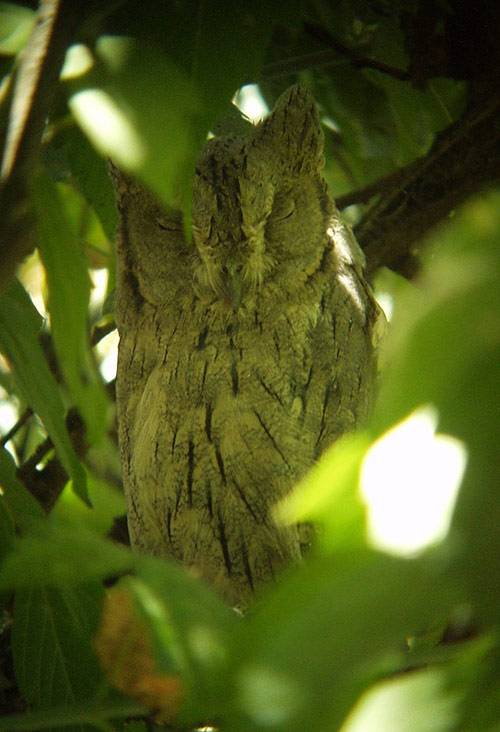
Striated Scops Owl
At the very least, we would like everyone birdwatching in Europe to make relevant records – species, location, breeding evidence – available to the project. This is easily done, since there are a number of existing online data portals that will be passing data to EBBA2, most obviously the BTO/RSPB/BI/SOC/WOS BirdTrack system. This rapidly developing, free-to-use system now allows users to submit data from sites anywhere in the world, providing a system to record all of a birdwatcher’s activity for perpetuity as well as making them accessible for suitable research and conservation uses. All breeding bird data submitted in BirdTrack will be made available to EBBA2 and national atlases.
Better still, we are encouraging birders to help us plug the gaps in coverage in 2017, whether that be through a day’s birdwatching in an unsurveyed square, searching for an under-reported species, or full-blown excursions looking to plug major gaps in coverage following atlas fieldwork protocols. The EBBA2 team have issued advice for travelling birders, and national coordinators for these countries (see list for OSME countries, below) would be delighted to hear from observers, groups and tour operators, who are interested in contributing.
| Country | National EBBA2 coordinator (email) |
| Armenia | Karen Aghababyan (Karen@aua.am) |
| Azerbaijan | Elchin Sultanov (elchin_sultanov@aos.az, elchin59@gmail.com) |
| Cyprus | Martin Hellicar (martin.hellicar@birdlifecyprus.org.cy) |
| Georgia | Guille Mayor (gmguijarro@gmail.com) |
| Kazakhstan (European part) | Sergey Sklyarenko (sergey.sklyarenko@acbk.kz) |
| Turkey | Kerem Ali Boyla (kusatlasi@gmail.com) |
The EBBA2 website has a new gap tool which allows interested observers see which 50-km squares coverage is most required in – the screenshot below gives an overview, but individual country maps can be produced, with clickable squares giving further information on the coverage required. Note that red squares indicate issues regarding security.
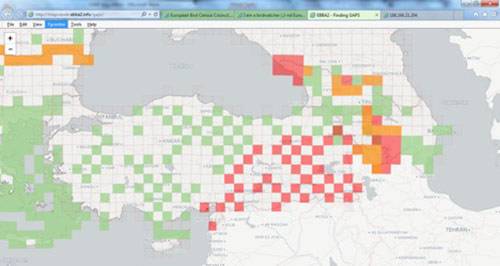
Although my focus here is on countries covered by OSME’s remit, our need for data extends right across Europe, so please consider submitting data from wherever you have it, and making efforts to collect and submit data from wherever you may be travelling in Europe in 2017.
EBBA2 is an ambitious project, which will be of great conservation value for years to come, but will only be as good as the data that goes into it. So please, if you are able to help, even in a small way, do so. Check the EBBA2 website for more information on the project and how you can help us, follow us on Twitter or Facebook, and if you are visiting one of our target countries, please contact the national coordinator. Thanks!
Dr Mark Eaton
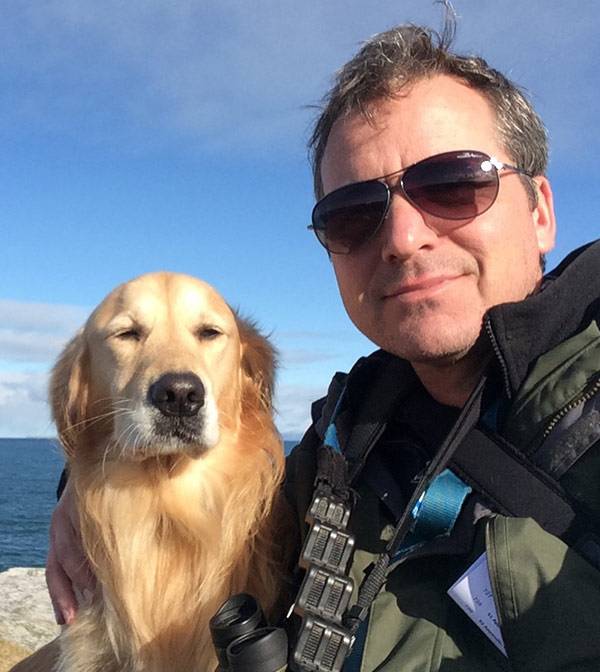
Principal Conservation Scientist at the RSPB Centre for Conservation Science, Mark oversees the RSPB’s involvement in monitoring programmes in the UK and overseas. He sits on the Steering Committee for EBBA2.
@Mark_A_Eaton
